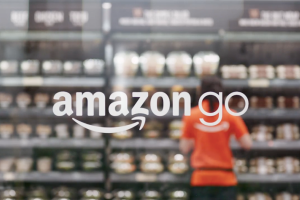Amazon is opening a physical store without checkout lanes or cashiers
For decades, grocery stores have dreamed of fully automated technology that would allow them to dispense with cashiers altogether.
 But self-checkout systems introduced so far have been clunky and wound up just shifting a lot of work from store employees onto the customer.
But self-checkout systems introduced so far have been clunky and wound up just shifting a lot of work from store employees onto the customer.
Amazon introduced a new self-checkout technology that — if it works as advertised — could totally transform the retail sector. Called “Amazon Go,” the technology literally allows people to walk into a store, select items they want to purchase, and walk out. There’s no checkout process at all. Amazon is opening an 1,800-square-foot convenience store in Seattle to test out the technology. It’s being beta tested now, and Amazon says it will be open to the general public early next year. If it’s successful, we can assume the technology will find its way into other retailers.
The big mistake past self-checkout systems made was assuming that they needed to create an automated version of the checkout line itself. People have experimented with techniques like attaching RFID tags — electronic chips that can be scanned from several feet away — to every item and installing RFID scanners in the checkout lanes. But the complexity of these systems — as well as practical issues like the tags falling off — has made this approach impractical.
Amazon uses a totally different approach, one that’s reminiscent of the shopping cart approach taken by Amazon’s website. Customers supply their payment information before they set foot in the store. Then they have a panopticon of cameras and sensors that literally follow the customer’s every step as she walks around the store. If she takes an item off a shelf, Amazon’s software figures out what the item is and immediately adds it to the customer’s bill. If she puts the item back, the Amazon’s software deletes the charge.
This means that when the customer is ready to leave the store, there’s no need for a checkout process. Amazon already knows the value of what the customer has selected and has her payment information, so it can make the appropriate charge automatically.
That sounds amazing in theory, but obviously we’ll have to wait and see how it works in practice. The software will need to be very good at detecting when an item has been taken off the shelves — if the software misses items, or people figure out how to fool it, the store could lose money quickly.
But if the technology does work, it will virtually eliminate shoplifting as a problem. Because it works by watching actual items come off the shelves — instead of reading a tag or RFID chip, for example — you won’t be able to steal items by removing or altering tags.
And obviously, if the technology pans out it could have a big impact on the labor market. The technology won’t eliminate retail workers; stores will still need people to stock the shelves, answer customer questions, and make sure people don’t come into the store without providing payment information first. But it will almost certainly allow stores to be staffed with fewer employees, eliminating one of the most common entry-level job categories of the last century.
Axarhöfði 14,
110 Reykjavik, Iceland














